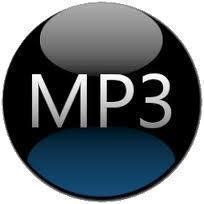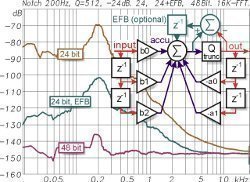MP3 (MPEG-1 Audio Layer 3) is a digital audio encoding format that uses a lossy compression algorithm. Although the algorithm used is lossy in nature, the sound quality of the MP3 file is very good. An average listener cannot tell the difference between the MP3 file and the original uncompressed audio file.
The lossy compression algorithm is very effective as it can be used to produce files that are 1/10th the size of the original uncompressed file. The MP3 file size depends on the type of compression. A mid-range bit rate of 128k bits will compress a file to 1/10th of its size.
MP3 was created by the Moving Picture Experts Group (MPEG) as a component of its MPEG-1 standard.
MP3 files first gained popularity because they could be downloaded for free. The small file size and the ease of conversion of CD audio files into MP3 files made peer to peer music file sharing very popular.
The first large-scale peer to peer file-sharing network site called Napster was started in 1999. Of course, peer to peer file-sharing of led to rampant copyright infringement. Free distribution of music was causing problems to music industry because it decreased their sales. Music companies made efforts in order to prevent ‘piracy’, but MP3 files continued to be popular. Today, many record companies have their own online music stores which offer MP3 music files at an affordable price. Some independent artists distribute their music online free of cost.
MP3 files are created by using Perceptual Audio Coding. Redundant parts of sound signals are removed in order to reduce the size of the file. These parts are inaudible to the human ear. This reduces the size of the file by a considerable amount. The human ear can hear sounds in the range of 20 Hz to 20 KHz. Removing the inaudible parts from the file doesn’t make a difference to the listener. Therefore, the listener cannot differentiate between the uncompressed and the compressed file. The end result is a small file with good sound quality.
MP3 format is very popular because transferring an MP3 file is much easier than transferring a file in WAV format. However, MP3 format has several limitations:
- The frequency resolution is limited and this decreases coding efficiency.
- There’s no scale factor band for the frequencies above 15.5/15.8 KHz.
- Aliasing compensation stage is required for handling aliasing issues and this increases the amount of energy to be coded in the frequency domain. This results in a decrease in coding efficiency.
- The overall delay concerned with Encoder/Decoder is not defined.
MP3 Encoding and Decoding
No specifications for MP3 encoders are included in the MPEG-1 standard. Many different types of MP3 encoders are available today and each of them produces files that have different quality.
On the other hand, decoding is well defined in the MPEG-1 standard. In most cases, decoders are bit-stream compliant. The decompressed output produced from an MP3 file is the same as the output that’s specified in the ISO/IEC.
MP3 file formation
An MP3 file contains a number of MP3 frames. This series of frames is known as an elementary stream. The MP3 data is the authentic audio payload. The MP3 header has a sync word which is used to recognize the start of a proper frame. It is followed by a bit that signifies the MPEG standard, and then followed by two bits that signify Layer 3 ( MPEG-1 Audio Layer 3 or MP3). The range of values for each segment of the header, as well as the specification of the header is clearly described in the ISO/IEC 11172-3 standard.




Follow Us!